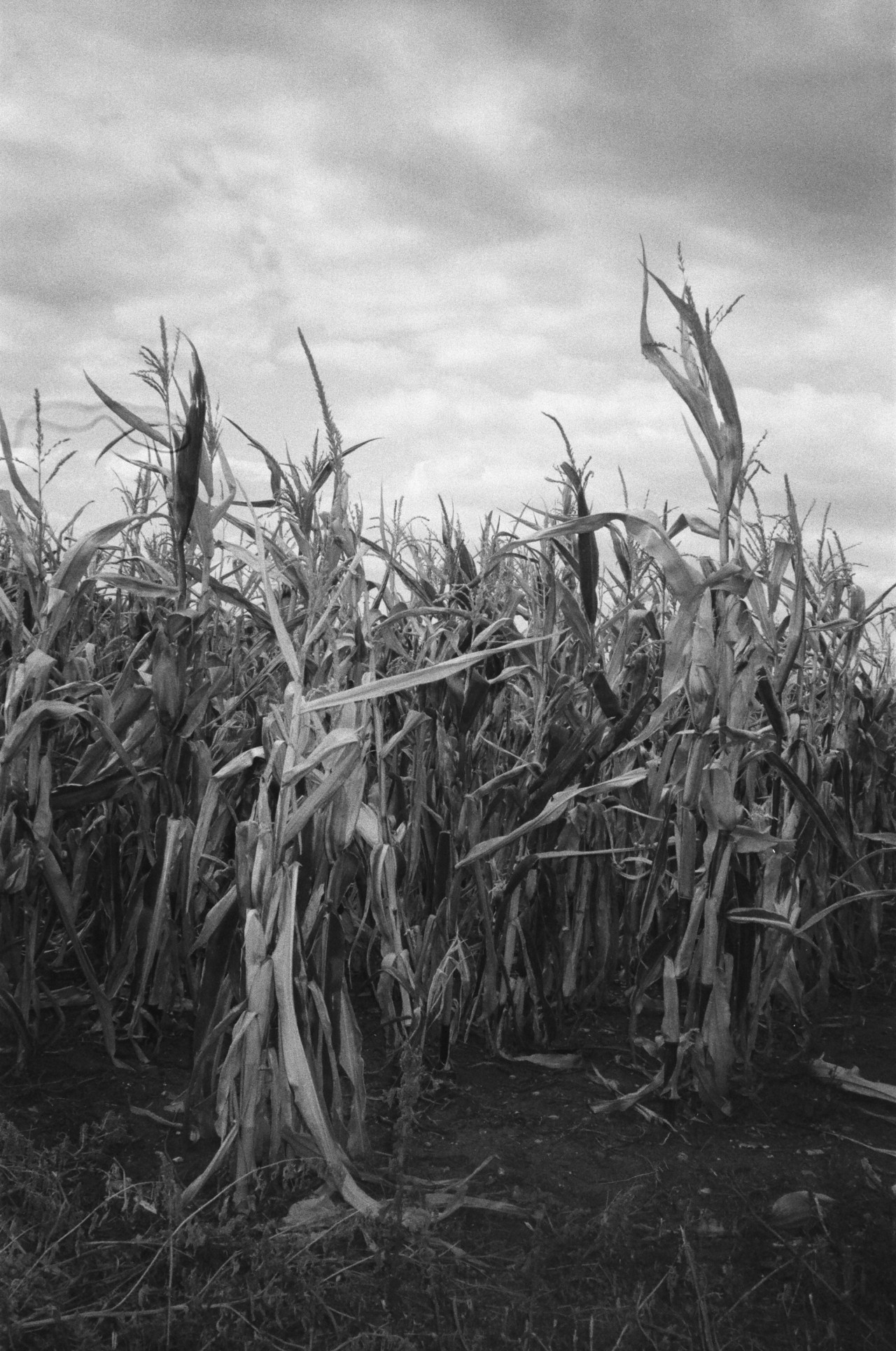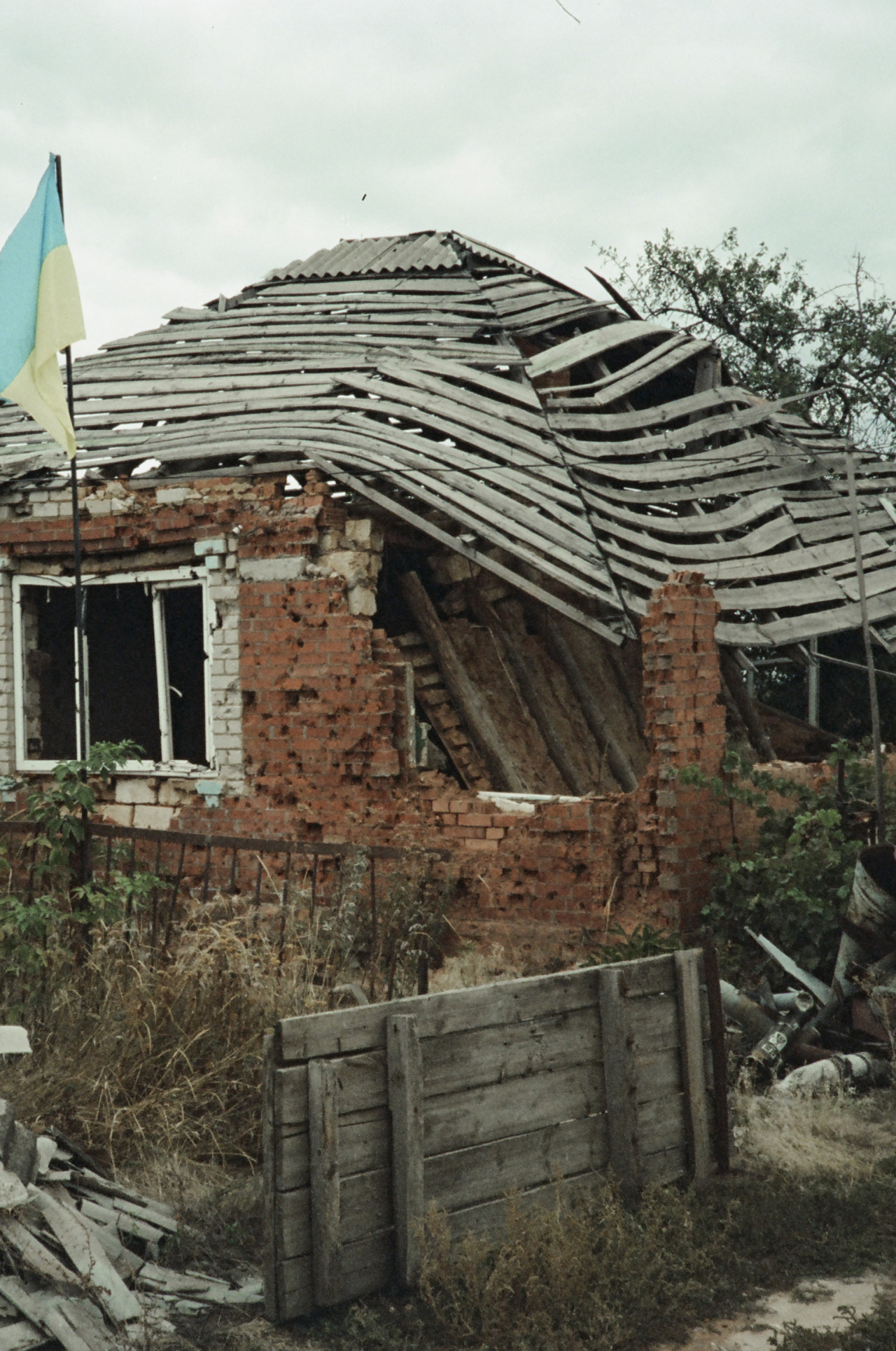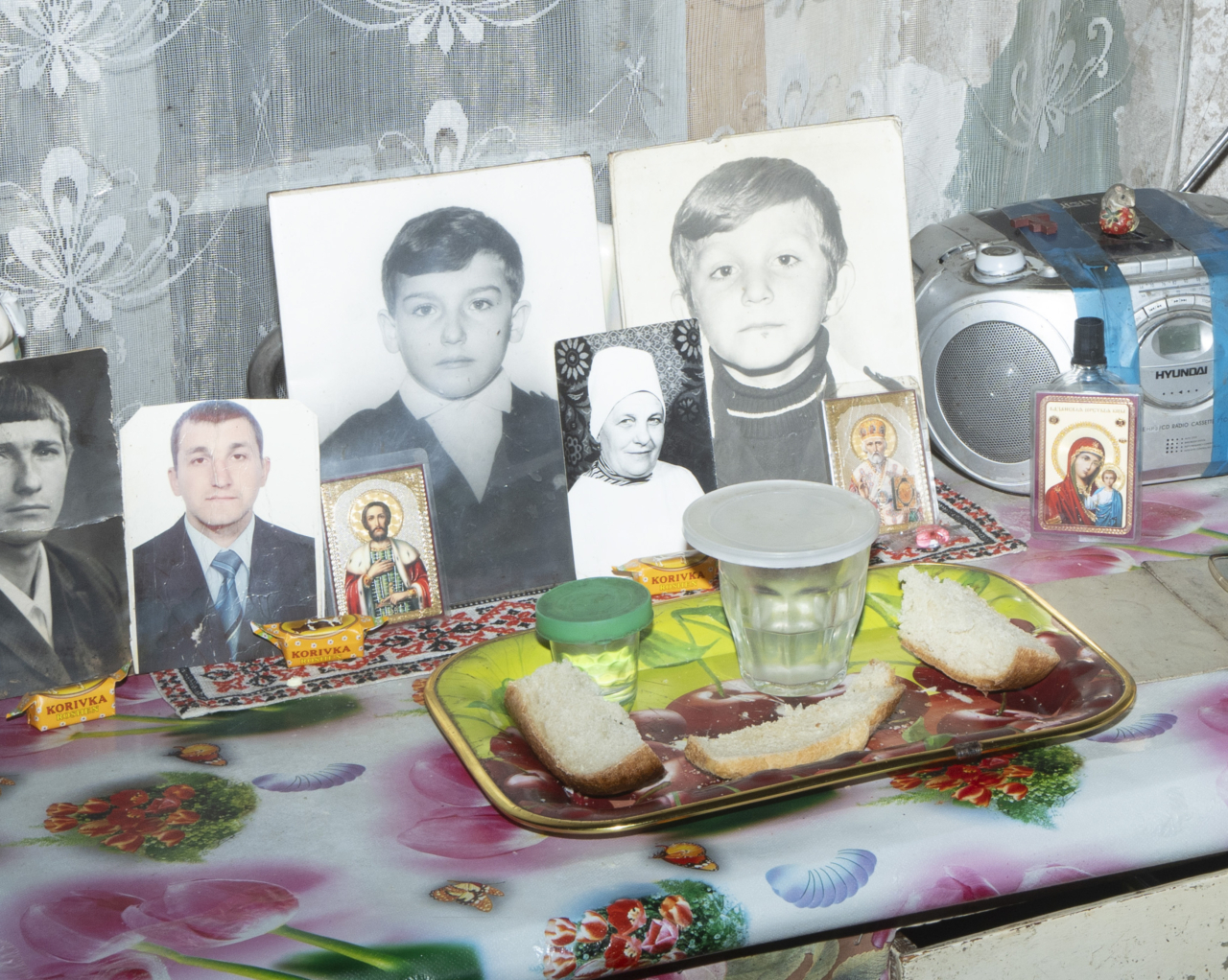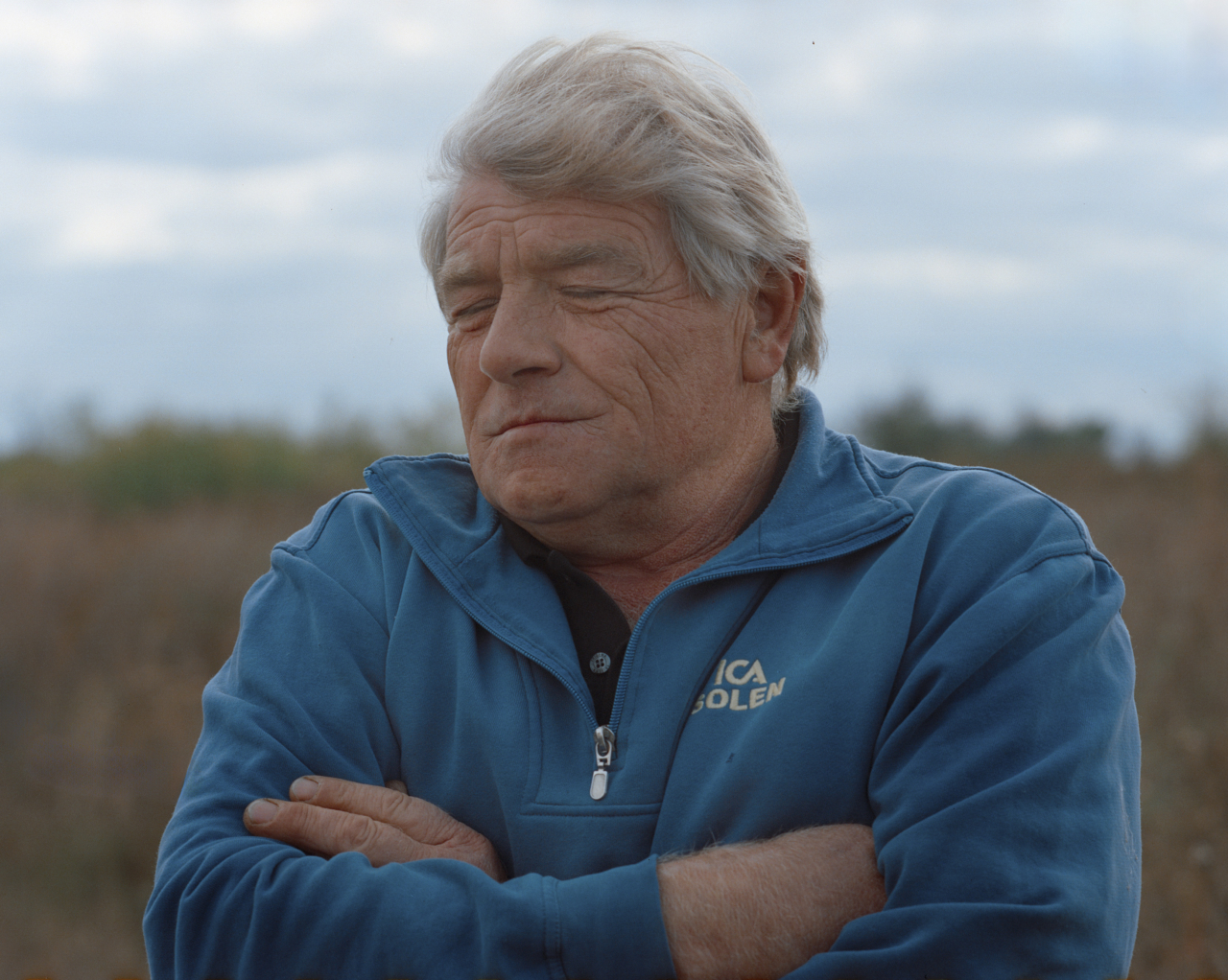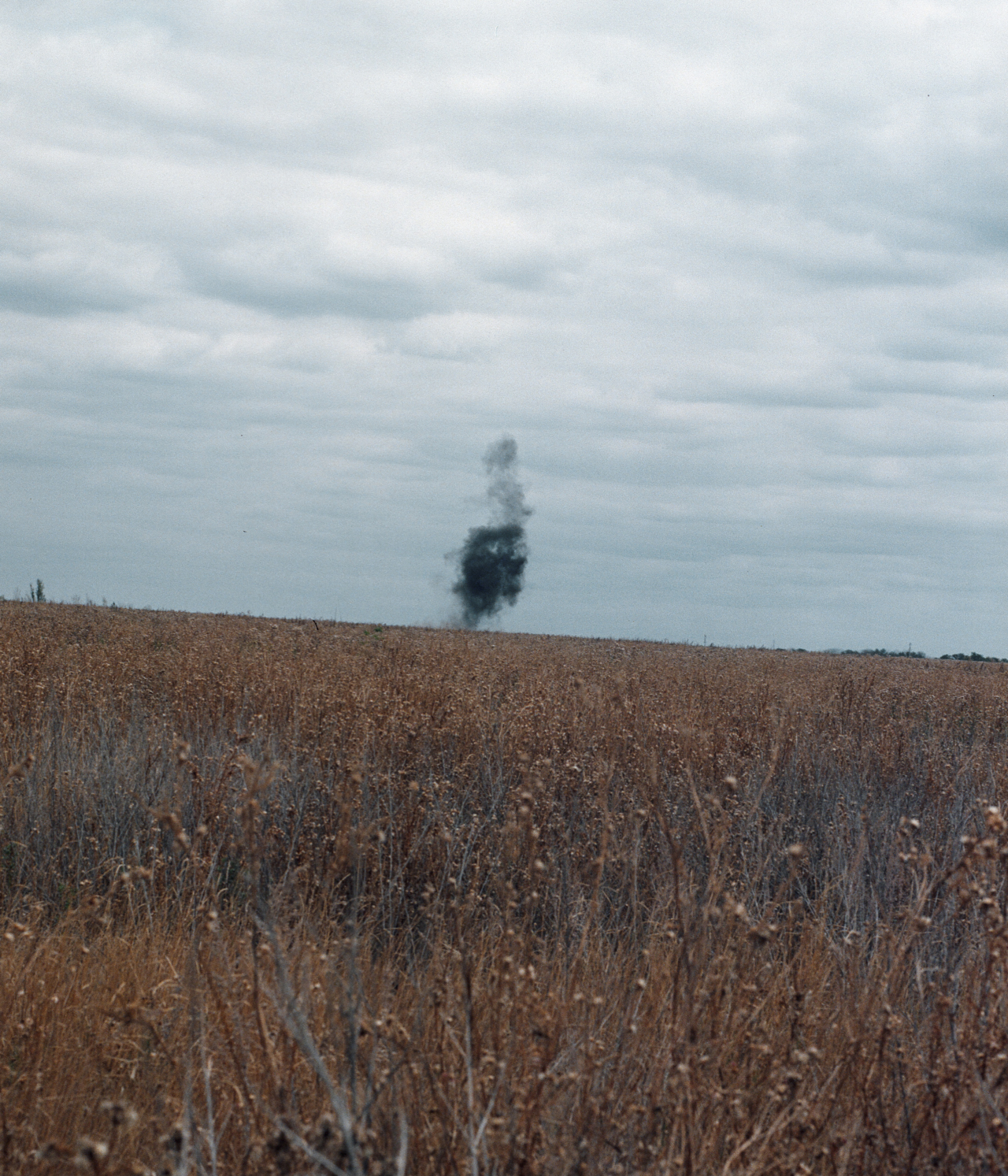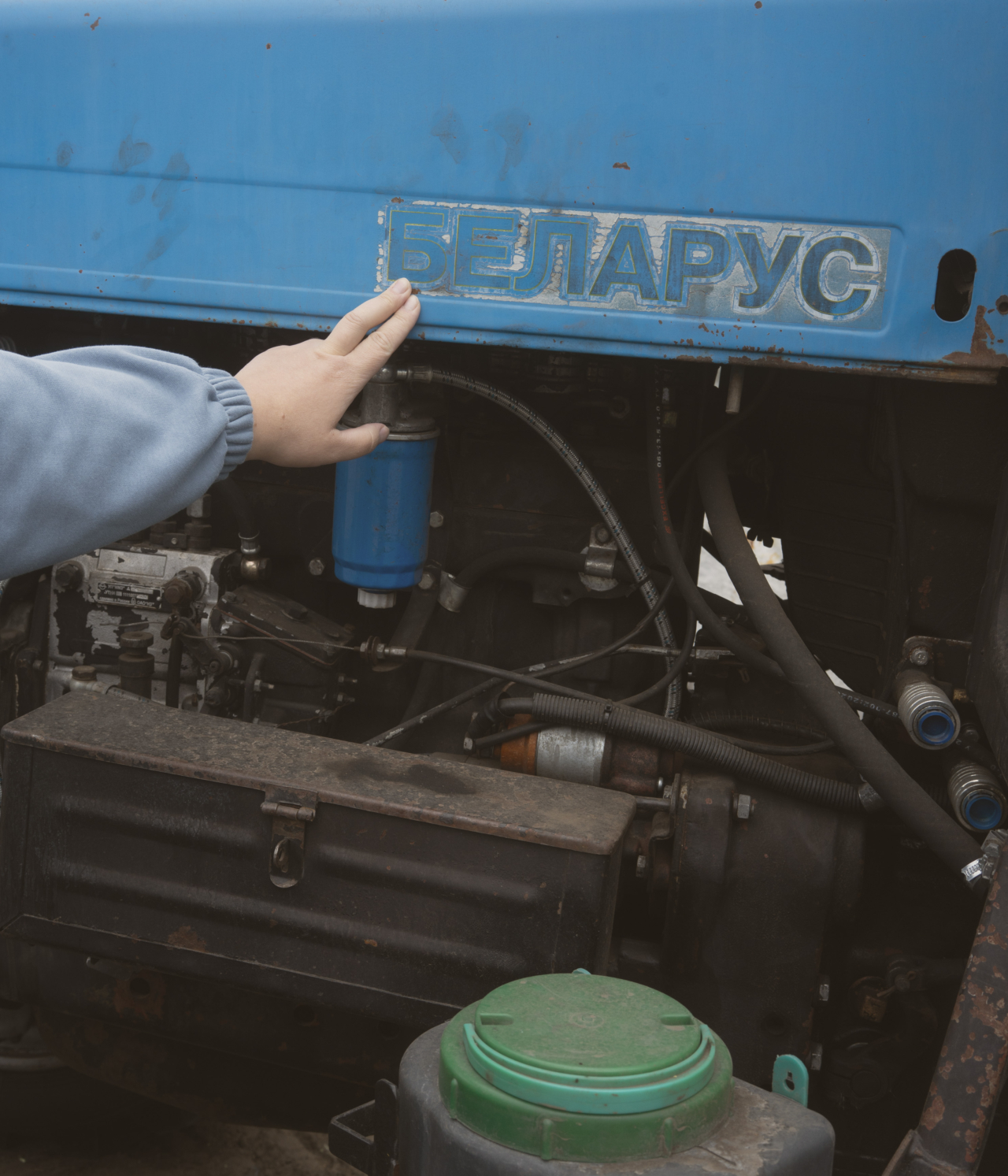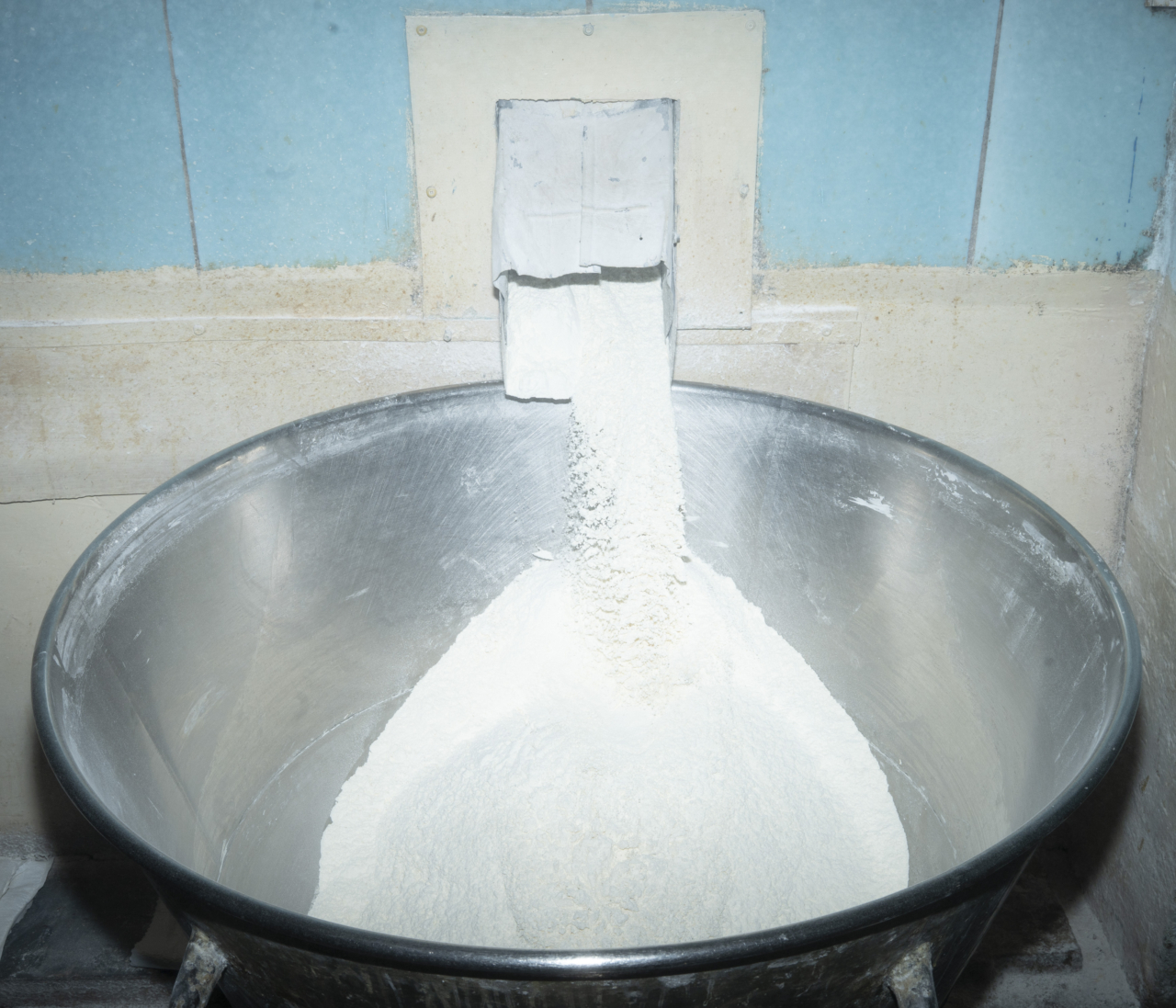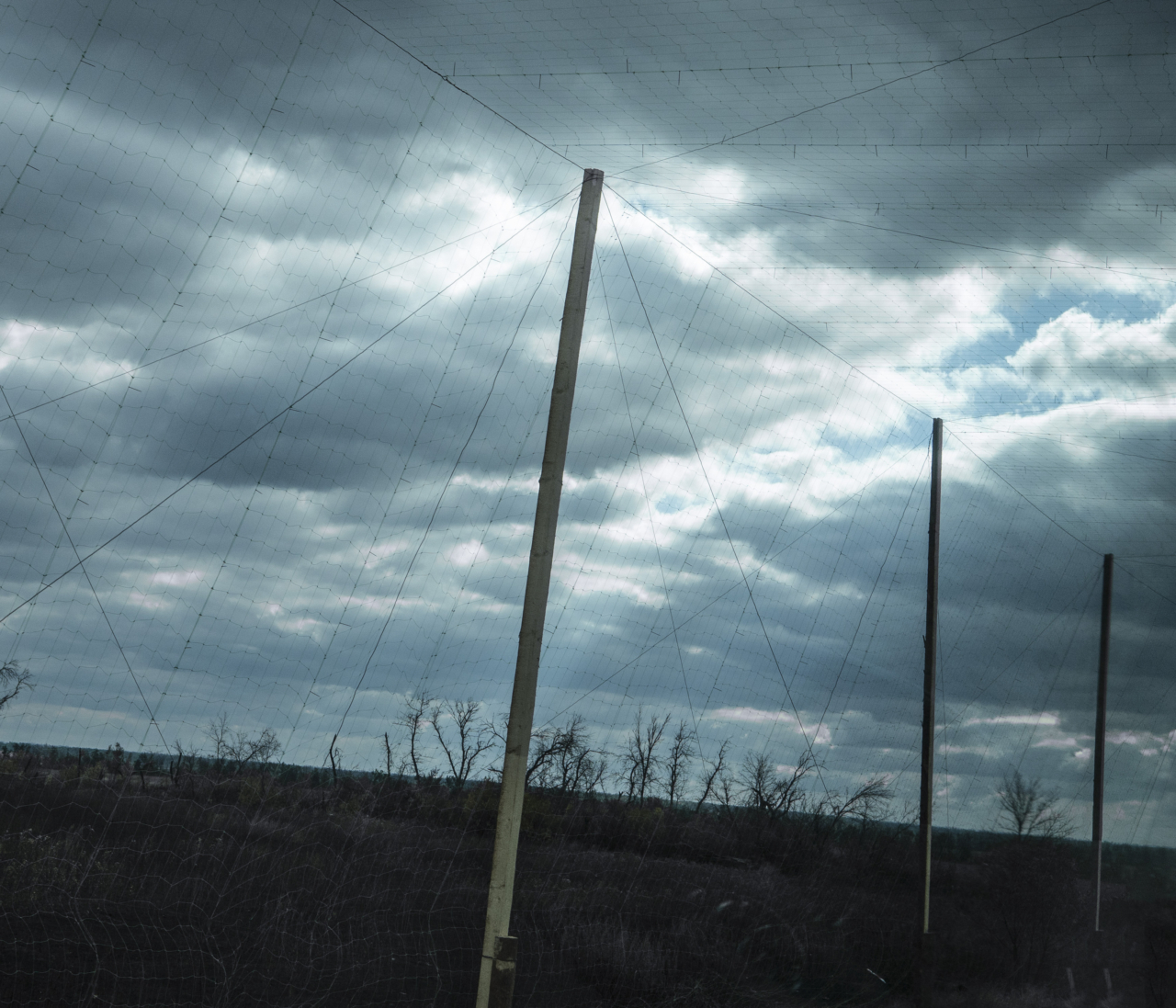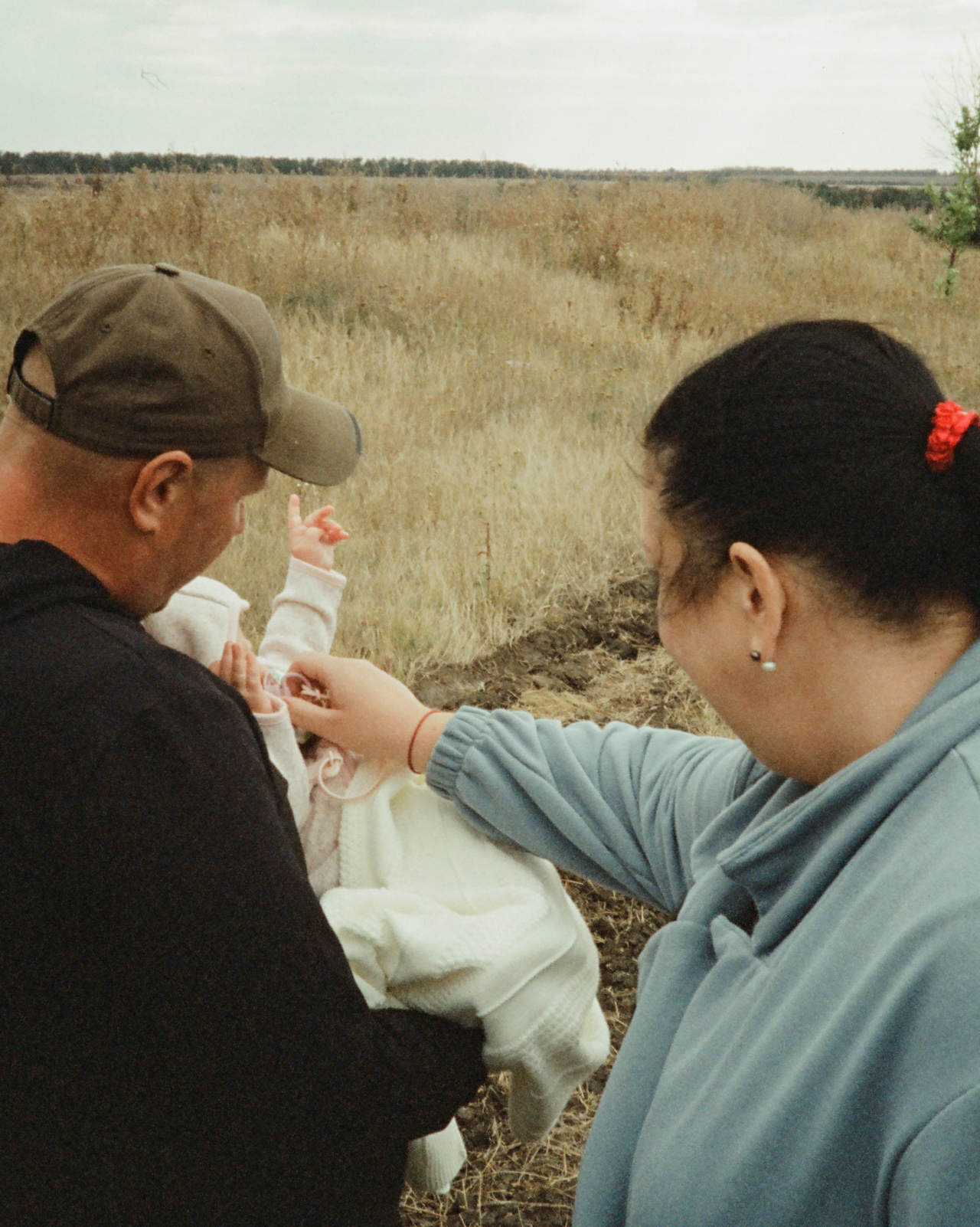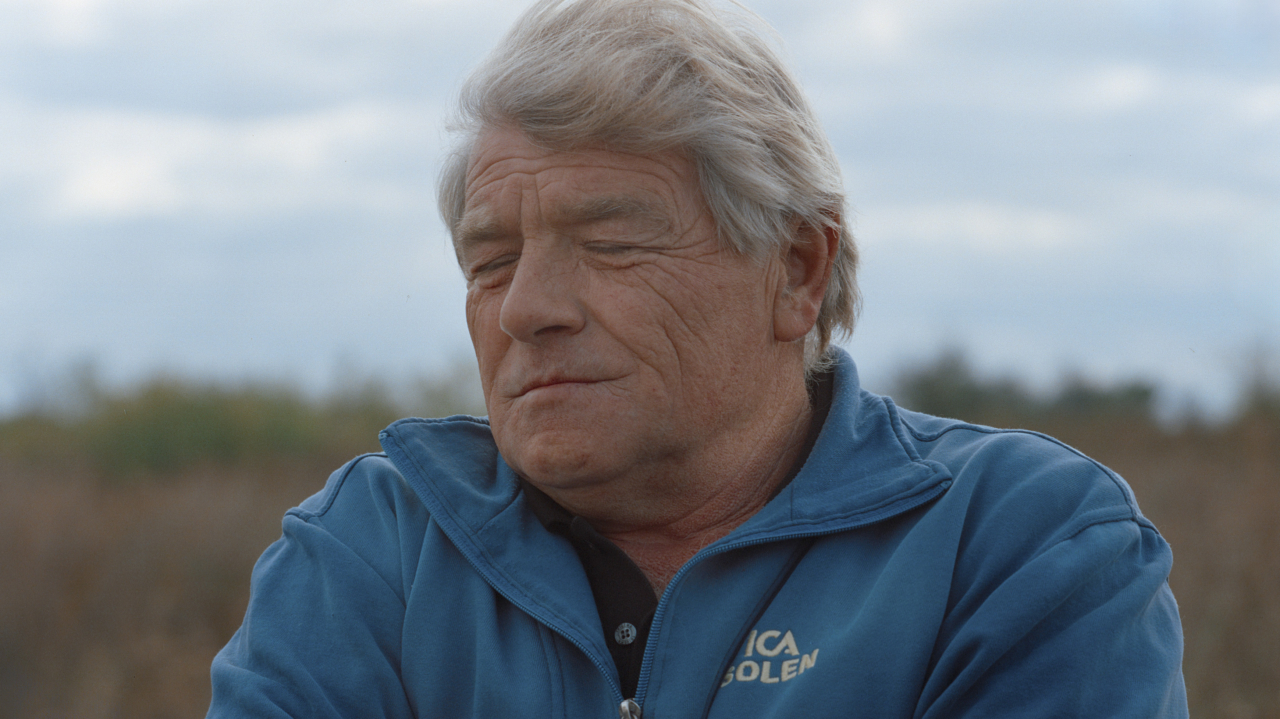
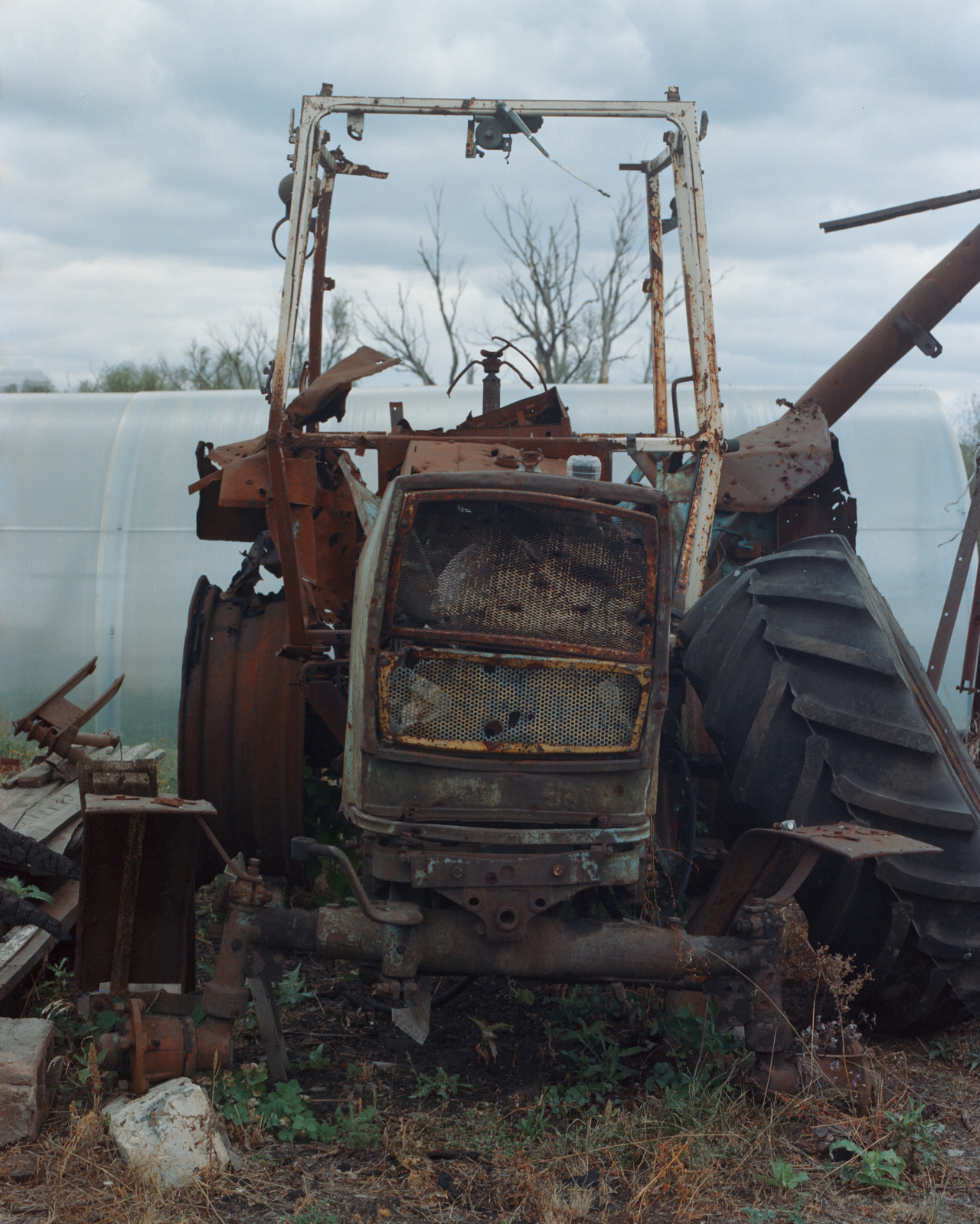
Words by Darcie Imbert
photographs by joshua olley
The start of October brought the first bite of cold in Ukraine.
On the eastern front, the road to Izium is sparse. It’s flanked by stretches of scorched Earth as far as the eye can see, occasionally interrupted by huge wheels of barbed wire and an archway of close-weave fishing nets to defend against kamikaze drones overhead. War has its visible toll: people killed and cities destroyed within the borders of the invader and invaded. But its more insidious consequences extends far beyond those lines, reaching the farmland that feeds the world and the systems that sustain it.
No war happens in isolation. Conflicts reverberate through the global economy in lasting ways, showing up even in the price tags of food stacked in supermarket aisles far from the front lines. The Iran-Iraq war started the decline of Iraq’s date industry, a downturn deepened by the U.S. invasion in 2003 that was later reflected in rising prices the world over. The Vietnam War disrupted rice production in the Mekong Delta, turning a major exporter into an importer and driving the cost of rice up in the early 1970s. Years of conflict in Yemen, once a leading coffee producer and exporter, caused an exports market collapse that pushed up the value of the country’s prized beans.
The war in Ukraine, which started when Russia launched a full-scale invasion in February 2022, makes those connections impossible to ignore, revealing how conflict anywhere can unsettle what we eat, where it comes from, and the land that makes it possible.


At a U.N. World Food Programme distribution point in Zolochiv, a town in eastern Ukraine that has borne the brunt of Russia’s aggression, an elderly woman known simply as Mrs. Valentyna ties a cardboard box to a bicycle without pedals that she uses for support. With bits of discarded rope, she fastens the box to the skeletal frame in swift, practiced motions—the kind that come from routine.
This is just one of many local community centers across the country offering a monthly drop of non-perishable foods, largely frequented by older men and women with similar bike contraptions to Valentyna. Many younger people have either been mobilized or fled to safer areas. With the state focused on the immediate demands of war, humanitarian agencies have become a lifeline. In Ukraine alone, about 5 million people—roughly 15% of the population—now need food and livelihood assistance.
“There’s this assumption that because this is such a big agricultural country, people aren’t hungry,” said Ragan. “It’s not like Yemen, Gaza, or South Sudan, where you see emaciated babies. But people here still need food, they need hope, and to be reminded that someone cares.” The WFP’s work extends beyond emergency food distribution. It supports local bakeries near the front line with contracts and energy-efficient equipment, funds demining efforts so small farmers can return to their land, and provides the tools and training needed to restart production.
At its core, aid is about giving people the means to rebuild their lives. For those working small- and medium-sized farms in Ukraine and across the Global South, that often comes down to something simple but scarce: working capital to buy seeds, fertilizer, and equipment for the next season. “Farmers need access to money,” Ragan said. “And they need some sort of reliability.”
“The start of the Russia-Ukraine war affected food prices everywhere.”
Ukraine has long been one of the world’s great breadbaskets. Its 32 million hectares of arable land once fed about 400 million people, supplying more than 10% of global wheat exports—food for every 20th person on Earth. But after Russia’s invasion, that finely tuned system was thrown into disarray, triggering a global food crisis.
“The start of the Russia-Ukraine war affected food prices everywhere,” said Dr. Sonja Vermeulen, director of programs at CGIAR, a global research center focused on protecting food, land, and water systems. “But most of all, [it hit] import-dependent countries.” She warned that globalized food systems are too interconnected to guarantee food security, especially as climate pressures mount. Yet substitution isn’t simple. Domestic grain yields have stagnated over the past decade as rising temperatures push crops beyond their heat tolerance.
“Take Egypt,” said Vermeulen. “Three-quarters of its wheat imports once came from Russia and Ukraine. Since the war, the government has been forced to find new suppliers. Between 2023 and 2024, food price inflation in Egypt reached 60% to 70%. In 2025, the government quadrupled the price of subsidized bread that two-thirds of households rely on.”
Conflict compounds existing climate and supply pressures, hitting hardest in places already stretched thin. Richard Ragan, who became the United Nations World Food Program’s country director in Ukraine after a post in Yemen, described how dependent many nations remain on Ukraine’s harvests. “Around one-third of the food that came into Yemen was from the U.N. WFP, another third was from Russia, one third was from Ukraine,” he told Atmos. The WFP itself sources much of its emergency grain directly from Ukraine; since 2022, it has exported more than 1 million metric tons to humanitarian operations around the world.
In wealthier nations, complacency often dulls awareness of how fragile food systems have become. Tim Lang, emeritus professor of food policy at City University London, has spent his career warning against that illusion. “Britain is still in this never-never-land, it-won’t-happen-to-us nonsense,” he said. “But if we want to be food-resilient and better prepared, we’ve got to start involving our public. We can’t live in the fantasy that supermarkets will always be there. They can be taken out, and they are being.”


Hunger is the quietest weapon of war. And food has become a tool of power wielded on three fronts around the world.
In Sudan, rival military factions are starving their own people into submission. In Gaza, a region once held up as proof that the desert could bloom, food and water have been deliberately held at the border by Israel, manufacturing a humanitarian crisis and forcing civilians into starvation. In Ukraine, ports have been blockaded, infrastructure destroyed, and farmland mined. “Russia is quite deliberately trying to take out and colonize some of the most productive land on the planet,” Lang said. “Land associated with feeding 55 countries.”
The strategy reads cold on paper, but on the ground it looks like farmland scarred by mines and the crumbling remains of homes. Yurii and Valerii Leshko, brothers from the eastern region of Dovhenke, have farmed this land for years. “It’s our life, we were born here,” Valerii Leshko said. “In Soviet times, all of the fields were connected. There is not one piece of land around here we haven’t worked.” When they returned after liberation, the fields were mined and their equipment burned. Russian rations and abandoned tactical gear lay among the debris. Desperate to get back to work, the brothers started clearing the land themselves before demining began under a U.N. WFP and Food and Agriculture Organization project.
Ukraine is now the most heavily mined country in the world, with roughly a quarter of its territory contaminated by explosives. Mines are an efficient weapon against food security: They block planting, make food aid perilous to deliver, and are devastatingly cheap. A single mine can cost as little as $3 to produce but up to $1,000 to remove safely.


Even so, there are still major gaps in understanding the scale of military emissions, said Doug Weir, director of the Conflict and Environment Observatory. “Our best estimate is that militaries and their supply chains account for around 5.5% of global greenhouse gas emissions,” he said. Armed conflict, he added, deepens the climate crisis across much of the world. It degrades land and blocks climate finance, among other barriers to recovery and adaptation.
Elliot Ball, a global climate and environment advisor at the Mines Advisory Group, points to the Middle East as a clear example of how prolonged conflict amplifies climate risks. “Protracted conflict has degraded ecosystems and water systems, leaving populations highly exposed to both food shortages and climate risks such as heat stress and drought,” he said. Syria has faced drought for decades, but none as severe as the current one. In Al-Nashabiyah, once fertile farmland east of Damascus, years of bombardment and deliberate river diversions destroyed irrigation networks, while unexploded ordnance and fuel leaks contaminated soil and water.
A similar pattern of environmental degradation is unfolding in Ukraine. For over a decade, Volodymyr Bugai, a farmer who receives financial support from the U.N. WFP’s Agrihub project, has cultivated more than 740 acres in Mykolaiv, one of the country’s most productive agricultural regions near the Black Sea. The area was occupied by Russian forces and later liberated. When he returned after liberation, he found his grain stores looted and entire patches of land where crops would no longer grow after shelling.
Mykolaiv’s troubles were compounded by the destruction of the Kharkova Dam, once so vast it was known as the Kharkova Sea. Its collapse in 2023 disrupted the microclimate that had sustained the region’s harvests. “We are positioned opposite the Oleshkivi Sands, one of the largest deserts in Europe,” said Bugai. “Now, when the wind blows it does not cool down with the help of the Karkhova Sea.”
The first year’s harvest after the dam’s destruction was roughly comparable to prewar levels, thanks to residual soil moisture; but this year’s yield was three times lower. Bugai worries about how war and a warming climate will continue to shape the land’s future. But farming, he says, is an act of defiance. “It inspires me,” he said. “Fighting for the future.”


Weapons are inherently dirty, often designed with little consideration for their environmental impact beyond immediate destruction.
Today, Ukraine has become a testing ground for rapid developments in drone warfare. Thousands of drones are deployed monthly, leaving behind 3 to 25 miles of plastic, fiber-optic cable each. Too little, Weir said, is being done to curb military emissions. Even basic monitoring and reporting remain limited. “Many militaries are beginning to investigate decarbonization opportunities, but for now the vast majority of high-emitting military platforms remain dependent on fossil fuels,” Weir added. “As many of these platforms, like aircraft and ships, are in service for decades, the huge current rise in military spending will lock militaries into these technologies for years to come.”
Identifying problems is easy; finding solutions is harder. It’s “sloppy politics” to describe the food system as broken, said Lang. “The term broken means it’s in pieces; nothing is happening; it’s not operating. But the system is carrying on in all its contradictions, externalities, distortions, and in all its mess.” He has a point. The system continues to function, but dysfunctionally. We live in an age of abundance, yet more than 319 million people still don’t have enough to eat. Building food security—especially during wartime, he argued—will require reshaping how food is traded, shared, and governed for decades to come.


Experts say that transformation won’t come from rhetoric alone. It will depend on reforming the rules that govern trade and finance through measures such as restructuring agricultural subsidies, establishing regional grain reserves, and expanding climate finance to support import-dependent nations. Vermeulen agrees, and cautions against simple fixes or ideological extremes. “Some experts advocate greater self-reliance in agriculture to reduce import dependence,” she said. “While others advocate diversifying supply from across the globe to cushion the impact of geography-specific crop failures.” The most resilient approach, she added, is to hedge our bets and do both.
The pattern runs both ways: As climate shocks multiply, they heighten the risk of future conflict and displacement, an escalating loop that ties the planet’s wellbeing to our own security. “It pays to maintain the Earth systems that underpin human health by staying within planetary boundaries for greenhouse gas emissions, nitrogen, biodiversity, and plastics,” Vermeulen said. In the end, protecting these systems may be the surest foundation for peace.

Research was conducted with support from the U.N. WFP, The HALO Trust, MAG International, The Conflict and Environment Observatory, Dr Sonja Vermeulen, and Professor Tim Lang.
The Global Food System Is Buckling Under War and Climate Pressure
